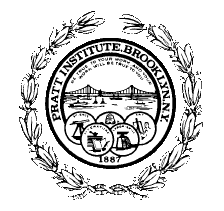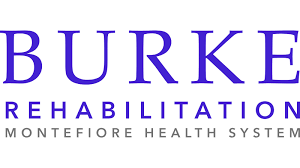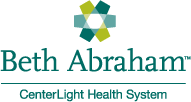Introduction
Currently, there is growing evidence for strength-based recreation therapy approaches which promote the retention of skills and abilities of those diagnosed with moderate stage Alzheimer’s disease (Bettie et al., 2007; Buettner & Fitzsimmons, 2009). This qualitative study was conducted by 4th year Therapeutic Recreation College students at St. Thomas Aquinas College, in New York. The treatment group (N = 6 persons diagnosed with moderate Alzheimer’s disease) voluntarily participated in a 7 week intervention. Therapeutic Thematic Arts Programming for Older Adults (TTAP Method©) was the multimodal intervention utilized, and students data collection was adapted from adapting the Farrington Leisure Scale and one personal open ended statement after each session. This study, give the participants’ the opportunity to “have a voice” as well as give insight into their experiences during a structured approach focused on skill strengths and retention of abilities. The outcomes demonstrated that even though these individuals’ were significantly impaired cognitively, they were able to have positive responses (4.9 out of 5.0) from the TTAP Method©. The responses to the open ended questions showed interesting and powerful responses to how each individual was still able to engage, describe and differentiate this intervention from the normal daily activities. Participants’ expressed enjoyment of activities, specifically those diagnosed with moderate AD is an indication of focused mental stimulation. This descriptive study demonstrates the strengths and desire of those individuals diagnosed with moderate stages of AD to communicate, connect, differentiate, desire to express through self expression and creativity thus remaining engaged in life vs. withdrawal. The full attendance at every session throughout the 7 weeks speaks to the commitment and positive rewarding feelings that these individuals are capable of throughout the disease process. For this reason, this study contributes valuable qualitative data to accumulating quantitative data.
Background
Multimodal Interventions (a variety of mixed activities, stimulating all regions of the brain) have been proven to be extremely successful in early and middle stages of Alzheimer’s disease (AD) for
decreasing symptoms (Bettie et al., 2007; Ofstedal et al., 2007; Kumara et al., 2005). Additionally, multimodal interventions have been shown to positively affect social engagement, cognitive abilities, physical behaviors, and neuronal plasticity (Chertkow et al., 2001; Verret & Bergman, 2002; Burgener et al., 2008). There is evidence to support that engagement in activities including the mental, physical and social domains protects against cognitive decline in Alzheimer’s disease (Fratiglioni, Paillard-Borg, & Winblad, 2004). Multimodal interventions additionally have proven extremely successful in early stage AD and are designed to provide a wide variety of stimuli, affecting neuronal activity and responses through a variety of mechanisms. Teri and colleagues (2003) conducted a multimodal intervention utilizing exercise, and support group on memory and depression (N=140). Post-intervention outcomes included improvement in depression and physical functioning. Most significantly, outcomes were maintained at the 2-year post-intervention, with a trend toward lower institutional rates for treatment subjects.
Research has shown over the past decade that individuals suffering from Alzheimer’s disease have a strong need “to be heard” and to “have a voice.” (Buettner, 1999; Buettner & Lundengren et al., 1996; Doody & Stevens et al., 2001; Buettner & Fitzsimmons, 2009). Research describing the self-identified needs of the individual with AD is becoming a growing priority (Rose, K. M., 2009; Bettie, Bossen, Buckwater, Buettner, et al., 2007).Studies that focus on personhood and the importance of retaining feelings of self-respect, enjoyment of activities have been found to contribute significantly to the understanding of which programs prove to be effective (Claire, Wilson, Carter, Roth & Hodges, 2004).While addressing the lack of researching client perspectives during treatment, Zarit and colleagues (Zarit, Femia, Watson, Rice-Oeschger, and Kakas, 2004) proposed that the person with AD has specific needs which include; exploration of feelings of loss, grief and sadness as well as love, hope and fortitude. Most significantly the theme of “maintaining or retaining feelings connected to one’s self and to the larger community of peers, friends and family” is relevant when working with the Alzheimer’s population (Zarit et al., 2004).In order to understand the experiences of the client and create therapeutic goals relevant to the client’s experience, the voice of the client must “be heard” and the therapeutic experience must not only provide stimulation for rehabilitation but also meet the emotional and social needs specific to the individual with AD.
Methods
Study Design
TTAP Method©-Multimodal Intervention
This qualitative research study was used to test the effectiveness of Therapeutic Thematic Arts Programming for Older Adults (TTAP Method©) as a multimodal, therapeutic process which employs a 9 step structured intervention through the use of personal and/or environmental themes (Levine-Madori, 2007, 2009). In addition to its aim of structured stimulation of multiple aspects of brain functioning, the TTAP Method© addresses social and emotional needs, and integrates multiple opportunities for life review (Levine-Madori, 2007, 2009). Four therapeutic recreation seniors developed seven protocols which were utilized during the seven week intervention. The 7 TTAP Method© protocols’ were (1) meditation, music and drawing, (2) meditation, music and oil pastel drawing (3) sculpting and wreath making,(4) meditation, music and mask making, (5) meditation, music and painting a memory box, (6) meditation , music and painting (7) theme event, food and phototherapy. Students worked as a cohesive group conducting aspects of each session.
Farrington Leisure Questionnaire
The Farrington Leisure Questionnaire (FLQ), from the ATRA Nursing Home Guidelines, 2008 was adapted for this study. The questionnaire consisted of 7 questions about the current recreation program and they were asked to rate, using a Lickert scale of 1-5 how they felt about the programeach week. The questions consisted of the following (1) Are you happy with this current program? (2) Is the staff attentive to your needs during this program? (3) Has your level of wellness increased since coming to this program? (4) Are you more active in this program? (5) Would you enjoy an outside program?-omitted- NA (6) Is the noise level comfortable during this program? (7) Is the group size comfortable during this program? Additionally, the Residents were asked if they wanted to express anything that they were feeling about the session they had completed.
After completion of the 7 weeks the students examined the responses of the above 6 questions to answer four overall questions 1) Did individuals feel the TTAP Method© sessions increased their overall feelings of quality of life? 2) Did the sessions positively affect their personal needs? 3) Did the sessions enhance verbalization? 4) Does the TTAP Method© naturally increase opportunities for cognitive stimulation in programming?
Subjects and Setting
Subjects were recruited who had moderate stage Alzheimer’s disease using several methods. The Residents resided in a Skilled Nursing Facility (SNF) locked unit and were asked by the social workers, doctors, nursing staff, and recreation staff.. Consent forms were administered through both family and legal guardians with IRB approval.The residents were told that they could volunteer to be part of an additional Wednesday afternoon activity program, which would meet for 7 weeks for 60 to 90 minutes weekly. Residents were also informed that they could voluntarily stop attending program at any time. All family members were given consent forms and photo releases to sign and the study was approved by the IRB of the SNF. Due to confidentiality issues students were not given any information (age, current cognitive scores, etc ) other than the individuals names. Thus the study was descriptive and observational in nature. All participants agreed to be videoed and photographed and as part of the presentation a video will be shown. Students were paired up to one resident, and the other 2 residents were alternated when gathering the personal responses regarding each session.
Results
Participants reported that their emotional and social needs had been met within the session with a mean rating of 4.9 out of 5. Students reported observed and recorded Residents gradually becoming more verbally active with each other. This was demonstrated during the interaction between the Residents as each week went by. Residents attendance was at 100% and were noted by staff to wait at the elevator to be taken to the session. The participants verbalized and were taped as stating they were feeling “more alive each week” and that they felt they had “a purpose in coming to this program.” The patients were observed and recorded stating at the beginning of the fourth session that “they felt they were doing mental work”, and “this session felt like my brain was being worked –out.” Other comments included; “ I felt free during this group”, “ I feel very happy”, “I was able to really create something”, “I was able to do what I wanted”, “Someone saved me a lot of trouble”, “ I would like to be more active but I am not right now”, “I am becoming more active coming to this program”, “I am always active.”
The TTAP Method© sessions were found to increased their overall feelings of quality of life, by allowing their voices to be heard. The sessions positively affect their personal needs expressed and measured by the sense of personal satisfaction.. The Residents verbalization and use of language did increase from the first to the last session. Finally, the TTAP Method© naturally did increase opportunities for cognitive stimulation in programming through cognitive stimulation of the regions of the brain (see illustrations of each protocol) through verbal, auditory, sensory and kinesthic experiences.
Implications
By giving clients “a voice” during the sessions and allowing them to “be heard” this research provided insight into the experiences that the participants had during a structured therapeutic approach. Residents described feeling stimulated “mentally” by the opportunity to make choices even in moderate stages of the disease process. Additionally, an interesting common theme arose in the student’s research papers. They all stated that during the first few weeks, they had feelings of fear, lack of knowledge and an overall feeling of anxiety. These same feelings completely disappeared after the 7 weeks and students’ wrote that this clinical experience better prepared them in 2 significant ways. First, that all 4 would consider working with this special population with the gained experiences and second that it made all 4 students feel better prepared for entering an internship. This is significant as we are in an aging country, and it is estimated that 10 million baby-boomers will be one day diagnosed with AD. The growing aging population plus the ability to live longer makes it essential for students’ becoming CTRS’ to become more willing to work with this special population. This descriptive study demonstrates that The TTAP Method©, as a multimodal modality naturally enhances the strengths of those individuals diagnosed with moderate stages of AD. These 6 strengths’ are to communicate, connect, differentiate, desire to express through creativity, recall and self express (CCDERS©) thus remaining engaged in life vs. withdrawal.
References:
1. Ofstedal, B., Plassman, L., Langa, M., Fisher, G., Herringa, G., Weir, R., et al. (2007). Prevalence of dementia in the United States: The aging demographic and memory study. Neuroepidemiology, 29,125-132.
2. Kumara, R., Dear, K., Christensenb, H., Ilschnerb, S., Meslinb, S., and Sachdevc, P. (2005). Prevalence of mild cognitive impairment in 60- to 64-year-old community-dwelling individuals: The personality and total health through life 60+ study.Dementia and Geriatric Cognitive Disorders, 19, 67-74.
3. Manly, J., Tang, M., Schupf, N., and Stern., Y. (2005). Implementing diagnostic criteria and estimating frequency of mild cognitive impairment in an urban community.Archives of Neurology, 62,1739-1746.
4. National Institute on Aging, Progress Report on Alzheimer’s disease. (2005). NIH Publication (No. 05-5724). Bethesda, MD: Author. Retrieved from HYPERLINK “http://www.alzheimers.org/pr04-05/index.asp” http://www.alzheimers.org/pr04-05/index.asp
5. Gurland, B., Wilder, D., Lantigua, R., Stern, Y., and Chen, J. (1999). Rates of dementia in three ethno-racial groups. International Journal of Geriatric Psychiatry, 14(6), 481 – 493.
6. Tang, M., Cross, P., Andrews, H., Jacobs, M., Small, S., Bell, K., et al. (2001). Incidence of AD in African-Americans, Caribbean Hispanics, and Caucasians in northern Manhattan. American Academy of Neurology, 56, 49-56.
7. Chertkow, H., Verret, L., Bergmen, H., et al. (2001). Predicting progression to dementia in elderly subjects with Mild Cognitive Impairment: A multidisciplinary approach. Contemporary Clinical Issues. Plenary Session, 53rd Annual Meeting of the American Academy of Neurology. Philadelphia.
8. Lemonisck, M.D., & Park, A. (2001, May 14). The Nun Study: How one scientist and 678 sisters are helping unlock the secrets of Alzheimer’s. Time Magazine, 55-64.
9. Gardner, H. (1982). Art, mind, and brain: A cognitive approach to creativity. New York: Basic Books.
10. Yanker, B. (2000, March). A century of cognitive decline. Nature. 404, 125.
11. Moniz-Cook, E., Agar, S., Gibson,G., Win, T., and Wing, M. (1998). A preliminary study of the effects of early intervention with people with dementia and their families in a memory clinic. Aging & Mental Health, 2(3),199-211.
12. Clare, L., Wilson, B., Carter, G., Roth, I., and Hodges, J. (2004). Awareness in early-stage dementia: relationship to outcome of cognitive rehabilitation intervention.Journal of Clinical and Experimental Neuropsychology, 26(2), 215-226.
13. Burgener, S.C., Gilbert, R., and Mathy, R. (2007). The effects of a multi-modal intervention on cognitive, physical, and affective outcomes of persons with early stage dementia. Journal of Alzheimer’s Disease and Related Disorders, 12,143-156.
14. Rentz, C.A. (2002). Memories in the Making©: Outcome-based evaluation of an art based program for individuals with dementing illnesses. American Journal of Alzheimer’s Disease and other Dementias,17(3), 175-181.
15. Kaplan, F. (2000). Art, science and art therapy. Philadelphia: Jessica Kingsley.
16. Madori, L. (2007). Therapeutic thematic arts programming for older adults.Baltimore, MD: Health Professions Press.
17. Diamond, M. (2000). Older brains and new connections. San Luis Obispo, CA: Davidson Publications.
18. Pelletier, L.G., Vallerand, R.J., Brière, N.M., & Blais, . Construction et validation de l’Échelle de motivation vis-à-vis les Loisirs (EML). Communication présentée au congrès annuel de la SQRP, Ottawa, ON, 28 octobre 1989. Résumé des communications, p.146.










